November 25, 2025 | 06:00 GMT +7
November 25, 2025 | 06:00 GMT +7
Hotline: 0913.378.918
November 25, 2025 | 06:00 GMT +7
Hotline: 0913.378.918
In recent years, Ly Nhơn Commune of Can Gio District has been known as “shrimp breeding capital” due to widely applying hi-tech in the farming.
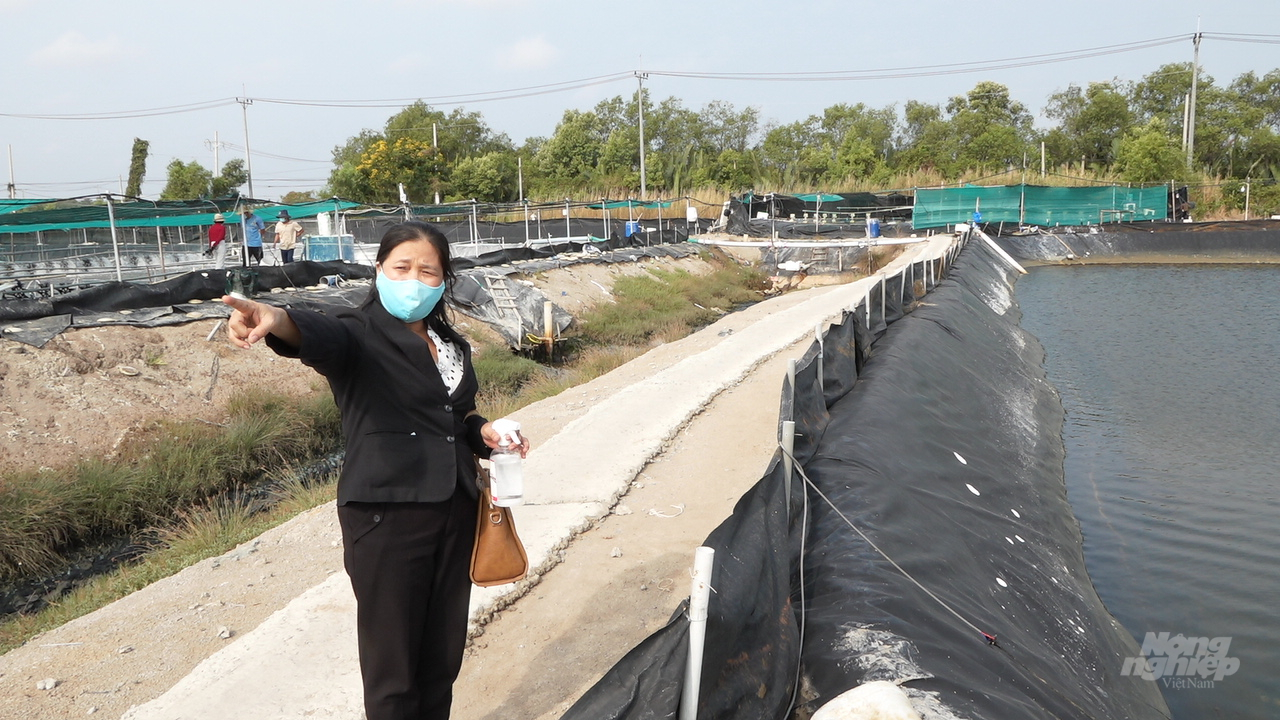
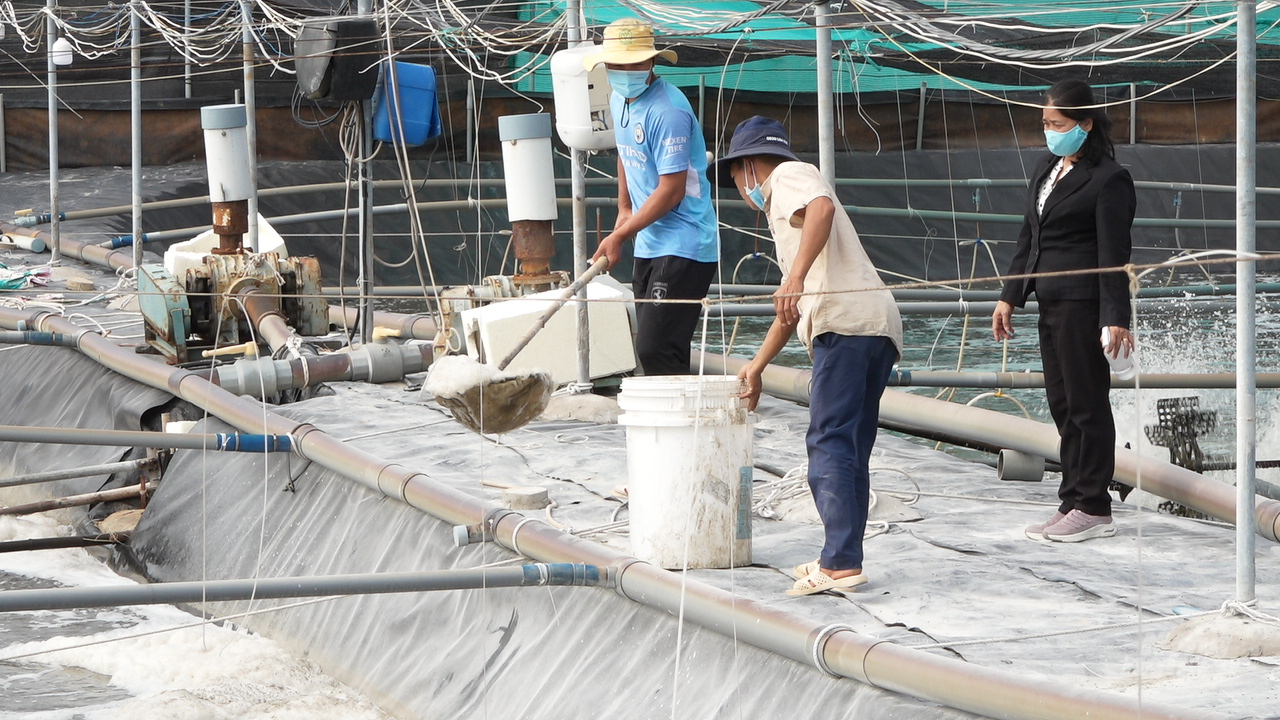
Farmers are seen busy doing various work including mixing feed, turning on the fan, oxygen machine, feeding shrimp and inspecting the pond. Photo: Minh Sang.
This is a breeding shrimp farming model with a closed process from selecting and stocking seed to harvesting, low impact on the environment, good disease control, fast growing shrimp, low risk, high yield and quality.
“High-tech shrimp farming brought higher economic efficiency than conventional method and ensured the environment,” Hieu said.
“Since the beginning of the hi-tech shrimp farming, we had fully complied the process of having a water treatment pond system and a settling water pond system, a breeding pond system which helps shrimps grow well and give high productivity,” he said.
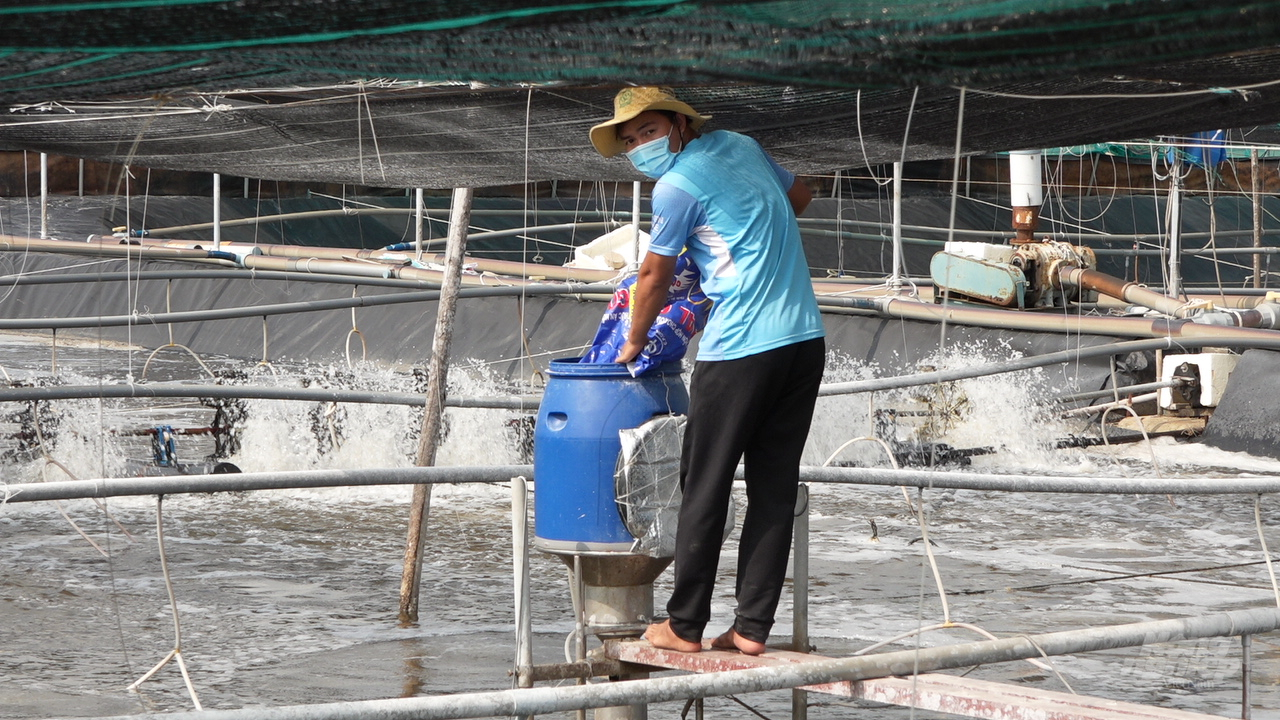

High-tech shrimp farming includes systems of water treatment ponds, settling water ponds, and breeding ponds. Photo: Minh Sang.
Hieu came to the hamlet hiring lands and ponds for breeding shrimps for more than three years.
During doing the farming, he was given breeding technical assistance from the HCM City’s Agriculture Expansion Centre so since farming until now, there has been no failure.
Meanwhile, household of Tran Thi Bang in Tam Thon Hiep hamlet has four hectares of white-leg shrimp farm and followed the traditional breeding practice for more than 10 years.
However, maintaining the traditional model was high risk because it was difficult to control diseases on shrimps.
When being consulted from hi-tech shrimp farming models, her family decided to invest in renovating the pond and properly implementing the hi-tech process.
After only a few farming seasons, her family harvested more than 30 tonnes of commercial shrimp, equivalent to more than VND4.2 billion (US$183,000), of which profit was more than VND2 billion.
Bang said: “In the past, in large-scale shrimp farms, the stocking density was low and use of antibiotics was rampant due to the polluted water. Besides, the farmers control the food sources for shrimps so it led to high risk in product quality and economic efficiency,” she said.
“When engaging to high-tech shrimp farming, the stocking density is thicker, no antibiotics are used, and food and environment are managed. Because of the construction of manholes, the weak animals will fall into the manholes and take them out. We can used these shrimps as dried food,” she added.
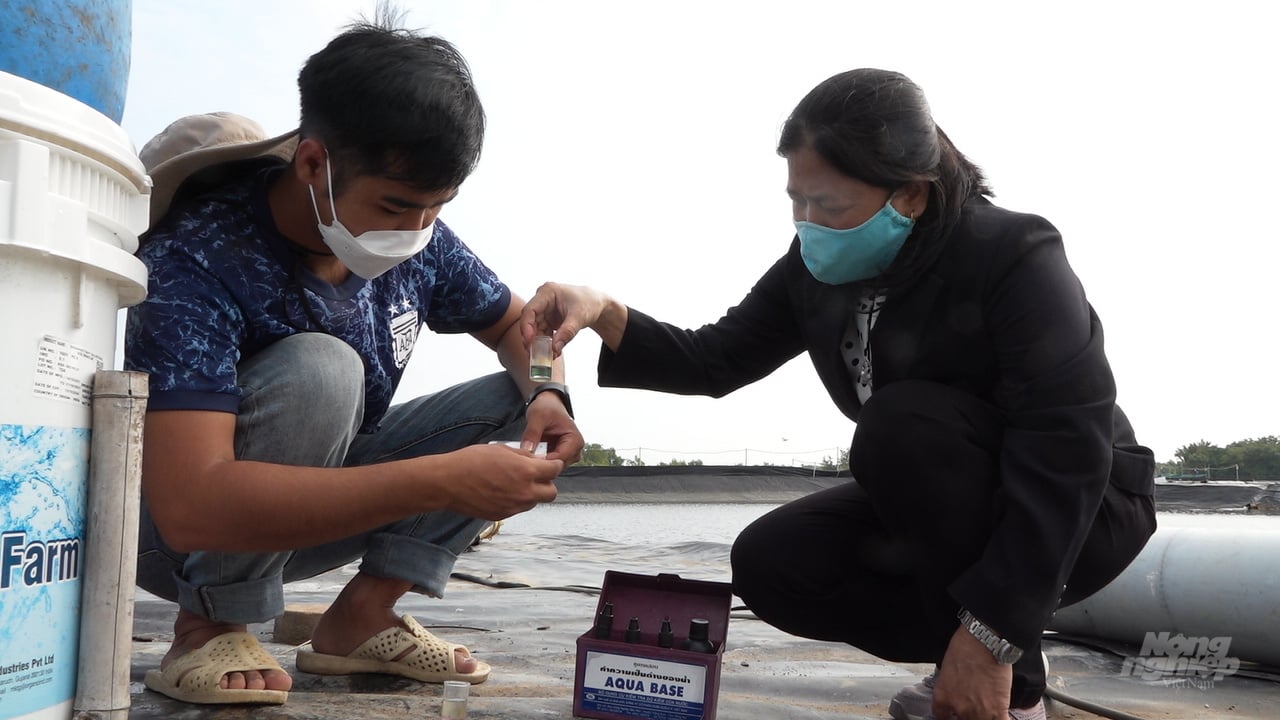
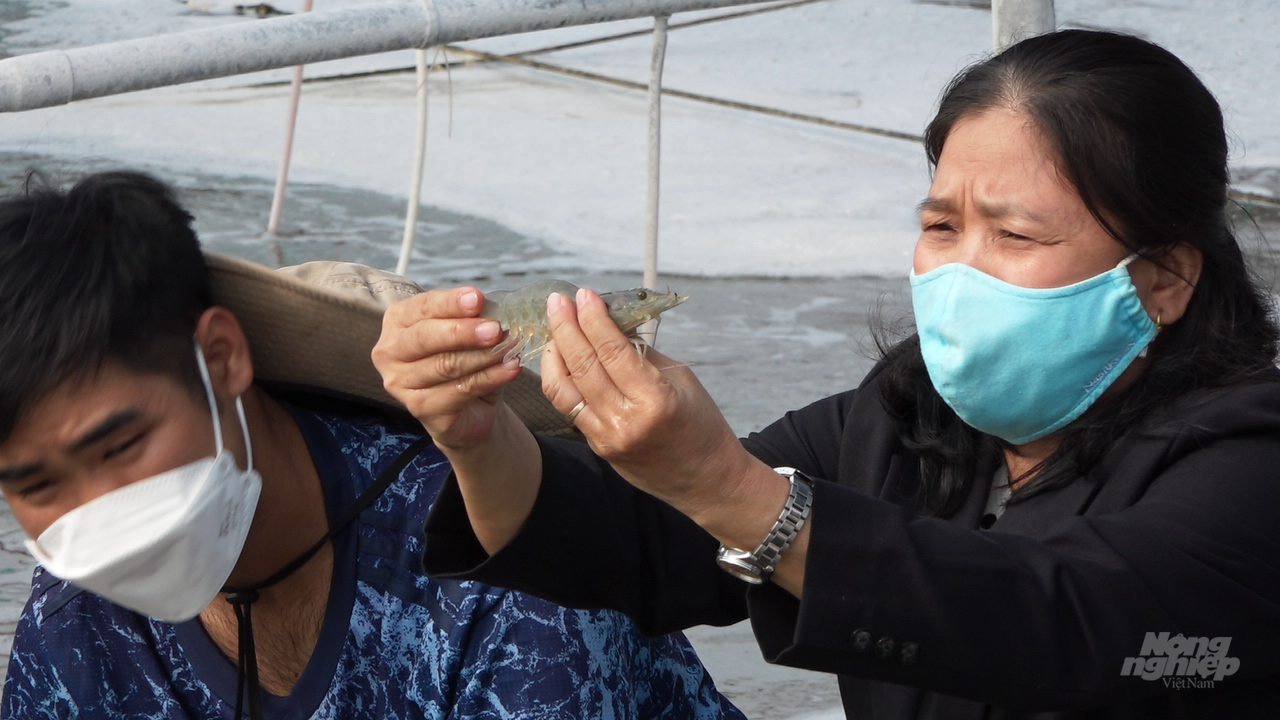
Farmers check shrimp culture water regularly and visit shrimp before harvest day. Photo: Minh Sang.
Another successful example of doing hi-tech shrimp farming is Tran Van Mua in Hiep Phuoc Commune of Nha Be District.
He consecutively won big, earning billions of VND every year thanks to the application of the hi-tech farming model.
His farm is 1,200 sq.m with systems of breeding and settling water ponds as guided.
According to Mua, each year he can raise three crops. Each batch of shrimp he raises for an average of 70 days along with a pond treatment time of 90 days. His family earns hundreds of millions of VND every year.
Similarly, Trinh Duc Thuan in Ly Nhon Commune of Can Gio District, who has been engaging to the shrimp business for more than 20 years, is currently farming white-leg shrimp according to VietGAP standard on canvas-lined ponds of 6,000 sq.m of water surface.
His farm is also a place for experience learning of many farmers of HCM City and some southern provinces.
Previously, he raised two crops per year and harvested about 38-43 tonnes of shrimp per crop on average.
But now, thanks to implementing the new method, he raised three shrimp crops reaping more than 110 tonnes of shrimp per year bringing higher economic efficiency.
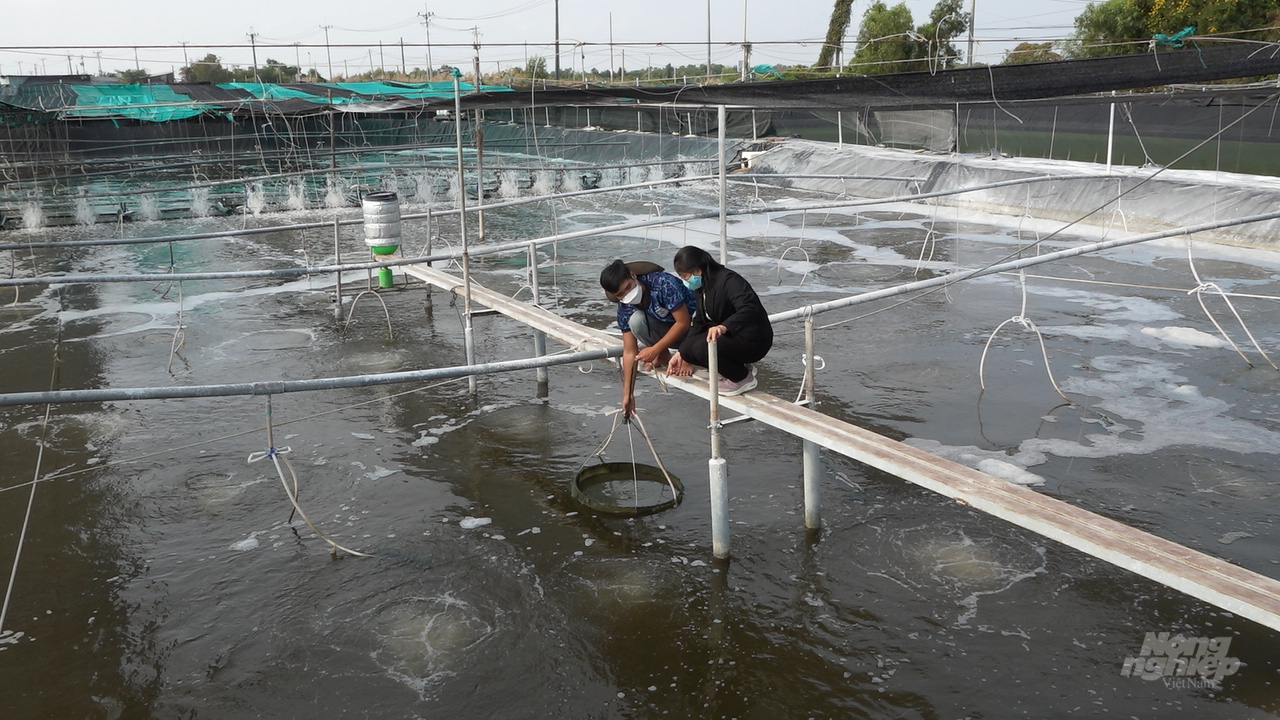
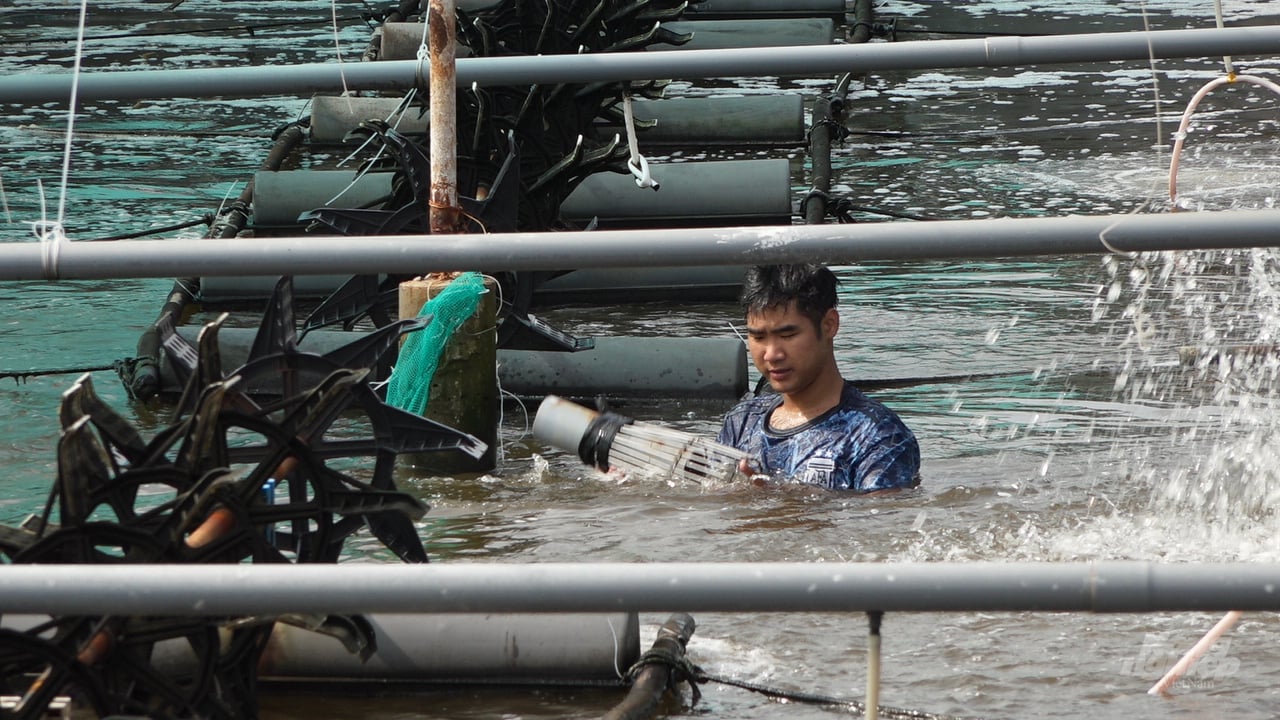
A farmer is seen specting and caring for shrimp in ponds. Photo: Minh Sang.
Thuan said: “When applying the hi-tech farming method, everything from the feed mixing to the medicating system was fully automatic.”
“I was currently installing an electrochemical and ultrasonic water treatment system,” Thuan said.
“I hoped that shrimp farmers should also apply high technology to help increase productivity, because if they were still keeping the old-fashioned extensive farming model, the output was very low, the risk was very high and the surrounding water environment was badly affected,” he said.
According to the breeder, shrimp farming according to VietGAP process means clean shrimp farming, clean seeds, clean farming process, selection of food for shrimp without using antibiotics and banned substances, application of modern technology in harvesting and processing as safety standards.
According to the HCM City Department of Agriculture and Rural Development, the shrimp farming area is mainly in four communes of Binh Khanh, An Thoi Dong, Tam Thon Hiep and Ly Nhon of Can Gio District and two communes Hiep Phuoc và Nhon Duc in Nha Be District.
Currently, Can Gio has 42 hi-tech shrimp farms with total 33.56 hectares.
The hi-tech are considered as a breakthrough change for aquaculture in the district.
Nguyen Thi Gai Nho, head of Technical Department (the HCM City City Agricultural Extension Centre) said that currently, in Nha Be and Can Gio Districts, the trend of developing high-tech shrimp farming was increasing sharply.
When farmers decided to engage to the hi-tech shrimp farming, they would be supported with seeds, essential materials and equipment, said Nho.
Translated by To Nhu

(VAN) The information was shared at the seminar 'Urban Agriculture - Solutions for Developing Green Spaces,' organized by the Kinh te & Do thi Newspaper and the Biotechnology Center of Ho Chi Minh City.
/2025/11/19/4141-2-132831_216.jpg)
(VAN) One of Japfa's outstanding solutions is implementing digital transformation and artificial intelligence (AI) to optimize operations, enhance productivity, and advance sustainable development.
/2025/11/19/4847-1-093540_448.jpg)
(VAN) The Gia Lai Provincial People’s Committee had a working session with the delegation of the U.S. Department of Agriculture, the State of Idaho, and representatives of the State's leading enterprises.

(VAN) Ca Mau has a sufficient foundation to become a strong regional aquaculture center, where production integrates the economy, the environment, and the lives of the people.

(VAN) SEIKI Group envisions itself as a pioneer in the ‘dual transformation’ of digital technology and green industry, standing alongside the Government and Vietnamese businesses in their pursuit of sustainable development.

(VAN) The VNGEONET network affirms Viet Nam's progress in mastering digital space, providing a precise positioning data platform to serve socioeconomic development.
/2025/11/14/3247-1-184556_35.jpg)
(VAN) Thai Nguyen is methodically implementing digital transformation in the livestock sector, laying the foundation for a modern, transparent, and sustainable agriculture.